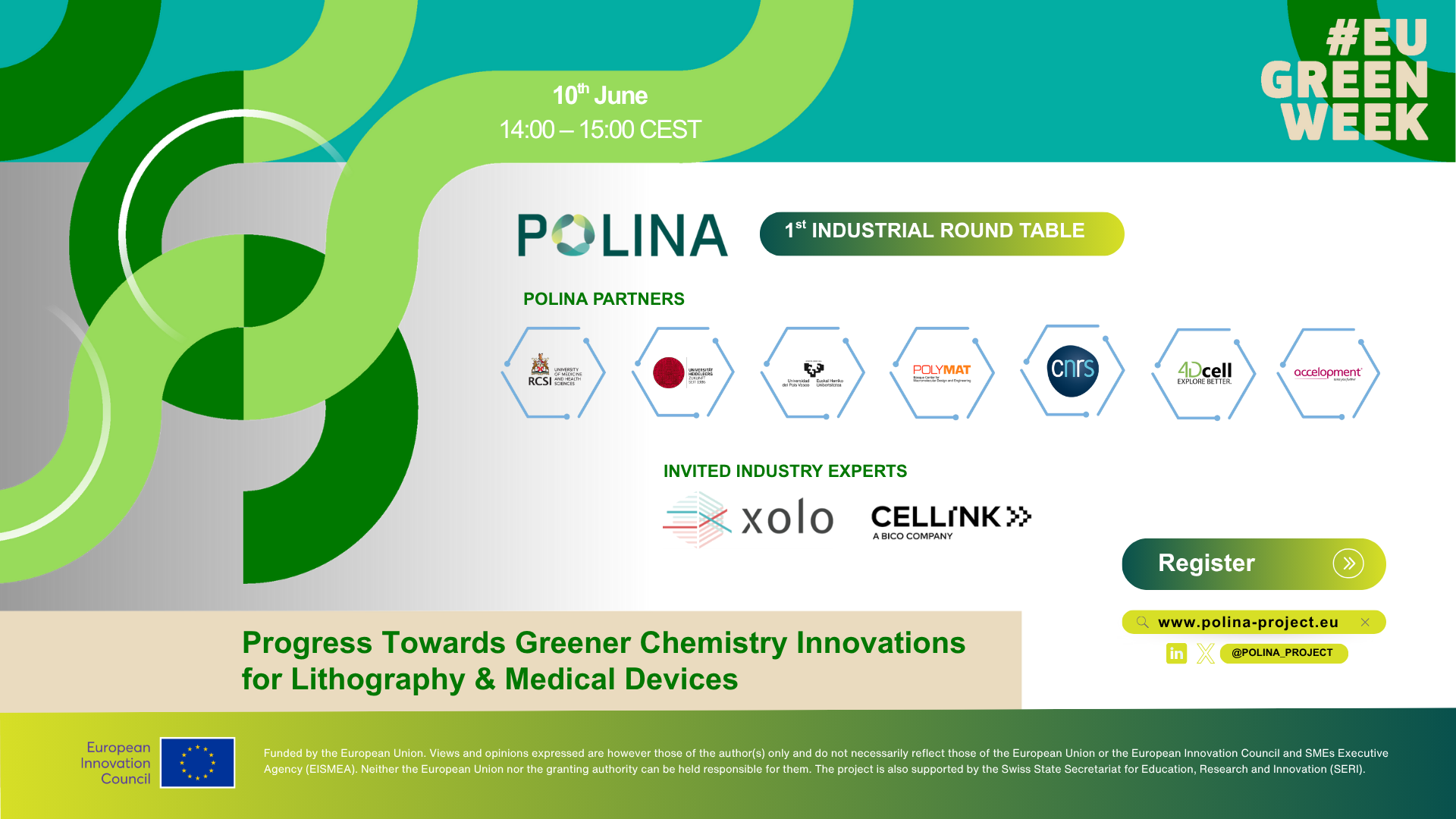As part of EU Green Week 2025, the POLINA project hosted its 1st Industrial Round Table on 10 June, bringing together leading industrial voices and academic experts to explore sustainable, bio-based solutions for the chemical, lithography, and medical device industries.
Exploring Light-Sensitive Bio-Based Materials
The round table showcased the progress of POLINA, a Horizon EIC Pathfinder project developing novel light-sensitive amino acid-based nanomaterials. These materials promise biocompatibility, multifunctionality, and enable precision structuring through photolithography, with potential applications in implantable devices and advanced R&D tools.
Bridging Research and Industry
The event created a dynamic platform for dialogue between POLINA researchers and industrial stakeholders, focusing on:
- Technical and regulatory challenges of implementing POLINA’s materials in industrial contexts
- Market readiness and policy incentives to support greener alternatives in manufacturing
- Needs for cross-sector collaboration to accelerate sustainable innovation
Highlights from Guest Speakers
- Dr. Arpita Roychoudhury from xolo GmbH introduced Xolography, a revolutionary volumetric 3D printing technique using intersecting light beams for ultra-fast, high-precision fabrication. Her presentation emphasized how this technology reduces mechanical stress and material waste, aligning with POLINA’s green goals
- Dr. Volodymyr Kuzmenko from CELLINK presented CELLINK’s work in plant-based nanocellulose biomaterials for 3D bioprinting, providing sustainable, animal-free alternatives in medical research and regenerative medicine. He emphasized standardised bioinks that enhance reproducibility across research labs
Academic Insights and Future Outlook
Moderated by POLINA Coordinator Prof. Andreas Heise (RCSI), the event also featured contributions from Dr. Robert Murphy from the University of Medicine and Health Sciences (RCSI), Prof. Eva Blasco from the University of Heidelberg (UHD)and Hevea Promotor PhD. Jon Ayestaran from the University of the Basque Country (UPV-EHU, POLYMAT).
The session concluded with a lively panel discussion focused on the future of green materials in 3D bioprinting and the importance of collaborative innovation between academia and industry. Demand for high-performance materials (fine resolution, cell interaction, topographic structures) is still dominating the development of green technologies, but the interest in reusable and recyclable materials as well as non-animal derived products is growing. Collaboration between academia and industry is now as important as never before to create innovative and sustainable materials that can closely mimic biological structures. As POLINA Coordinator Prof. Andreas Heise pointed out, “If you create the materials, you create the demand.”

